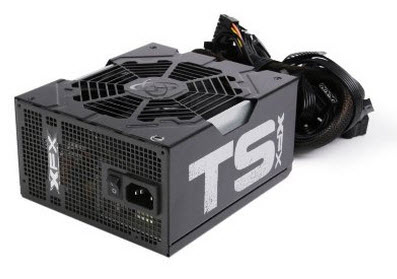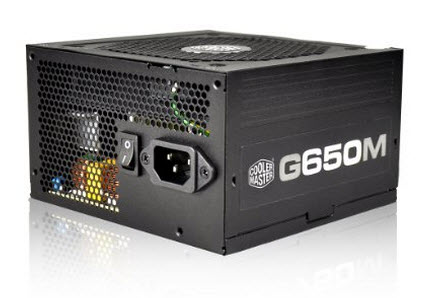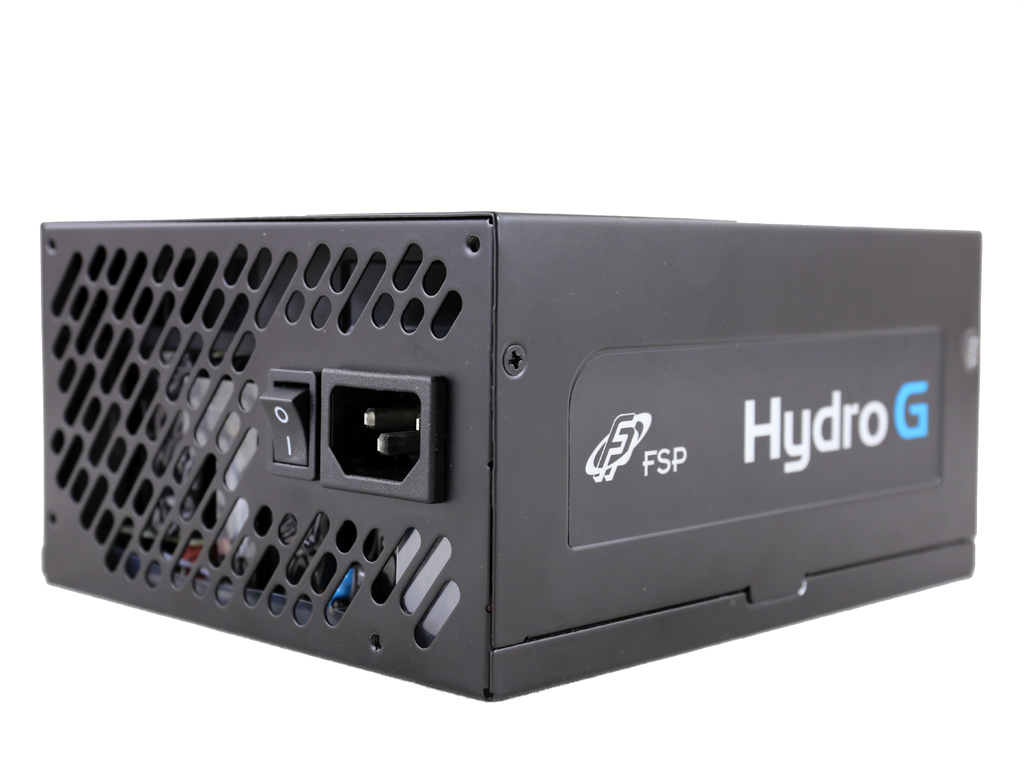FSP Hydro G 650 Power Supply Review
FSP recently released a new PSU platform that mostly addresses gamers. The Hydro G line includes three units, and today we're testing the 650W version. The PSU is 80 Plus Gold certified and features fully modular cabling. Let's see how it performs.
Why you can trust Tom's Hardware
Load Regulation, Hold-Up Time And Inrush Current
To learn more about our PSU tests and methodology, please check out How We Test Power Supply Units.
Primary Rails And 5VSB Load Regulation
Load Regulation testing is detailed here.
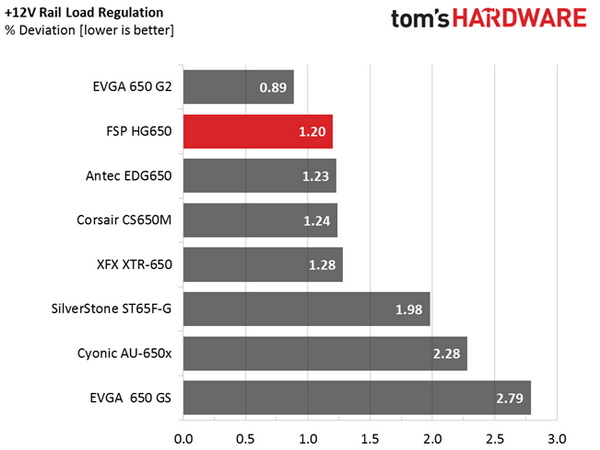
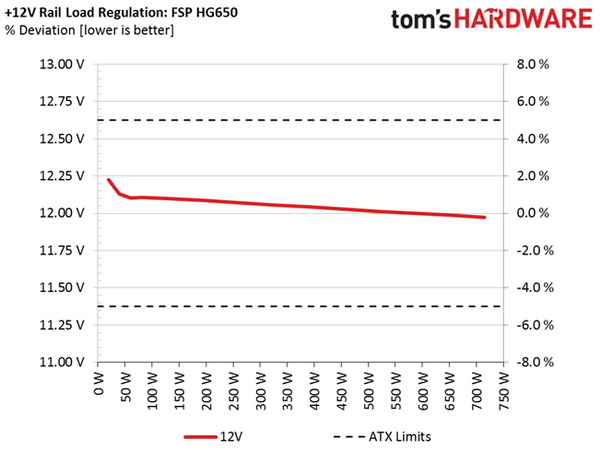
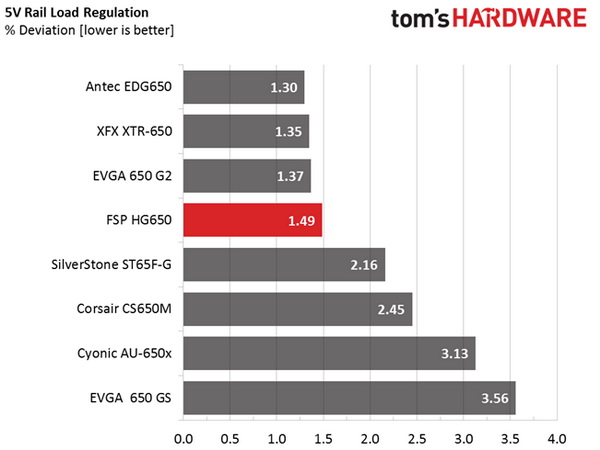
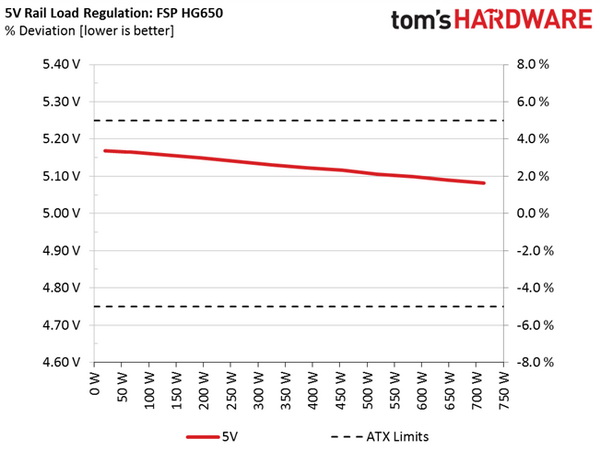
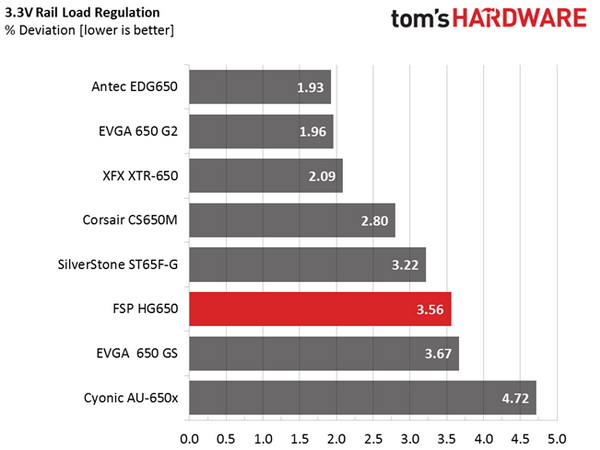
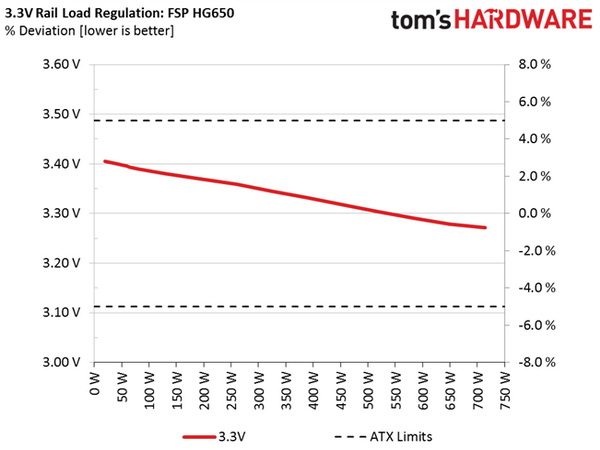
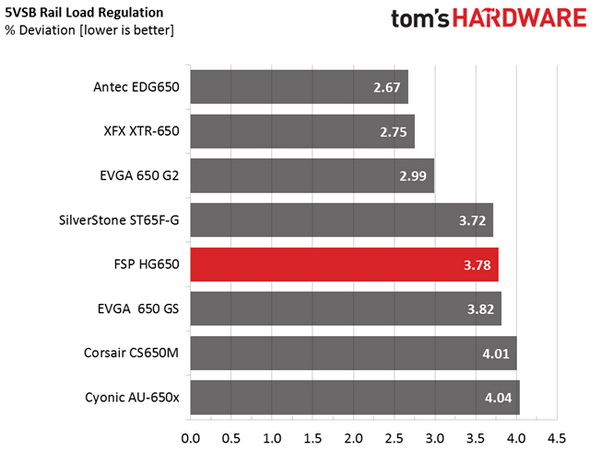
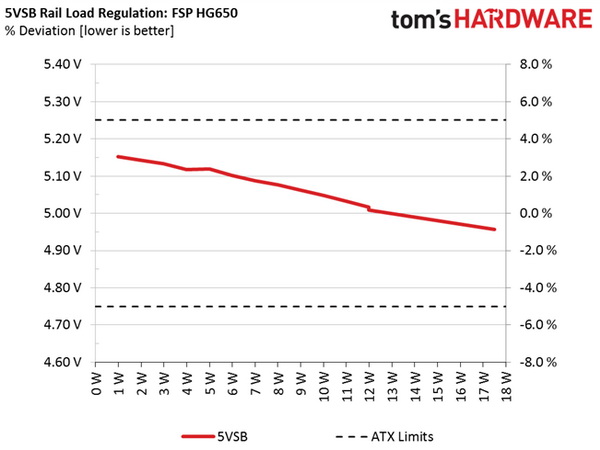
Hold-Up Time
Our hold-up time tests are described in detail here.
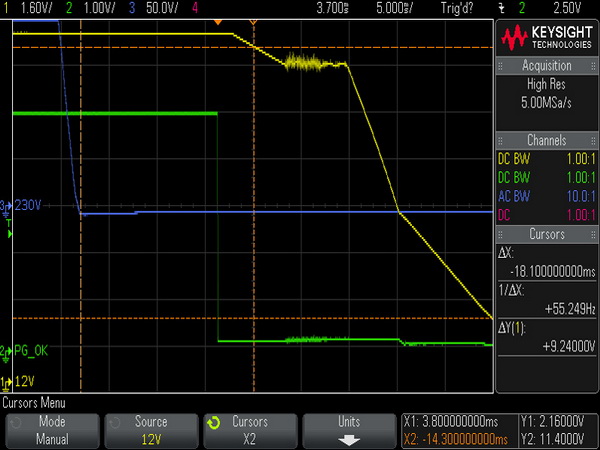
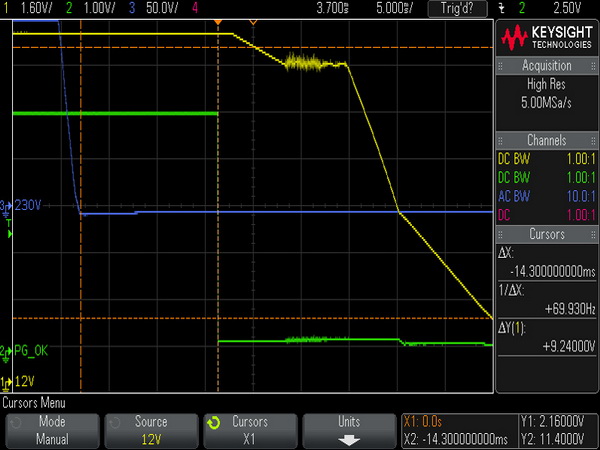
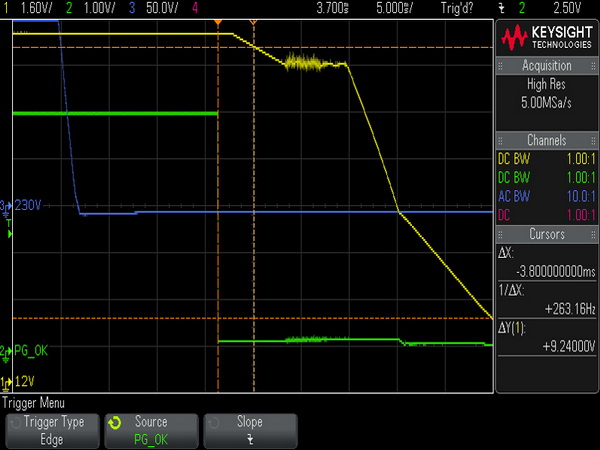
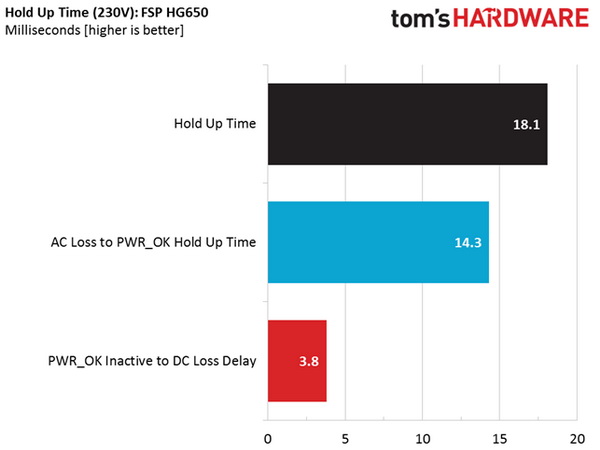
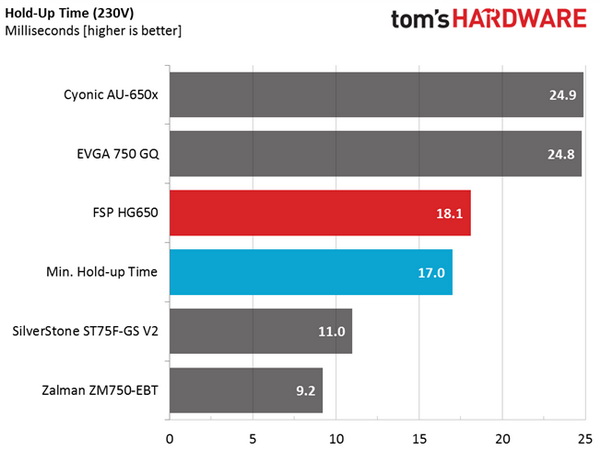
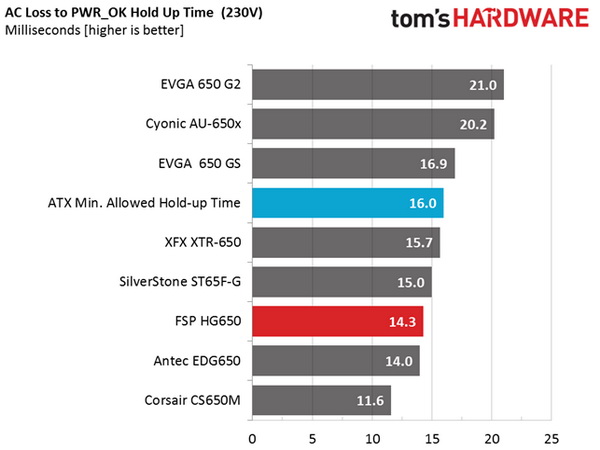
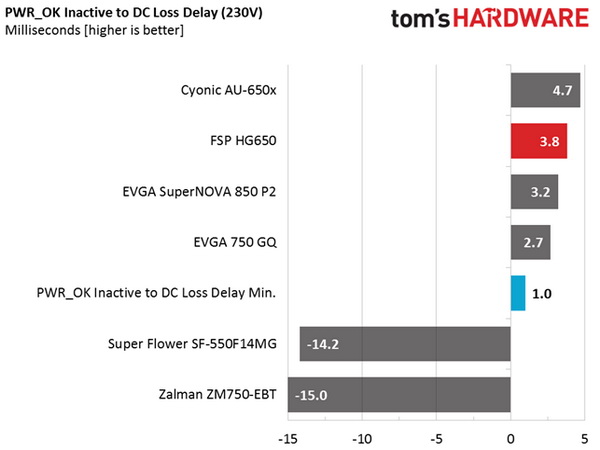
Although the hold-up time exceeds the ATX specification's requirement, the power-good signal's hold-up time is lower than 16ms, so the PSU fails this test. The PWR_OK inactive to DC loss delay time is way longer than what the ATX spec says it can be, resulting in the lower than expected PWR_OK hold-up time. With a bit of fine tuning, FSP could pass this test since the bulk caps it uses have sufficient capacity.
Inrush Current
For details on our inrush current testing, please click here.
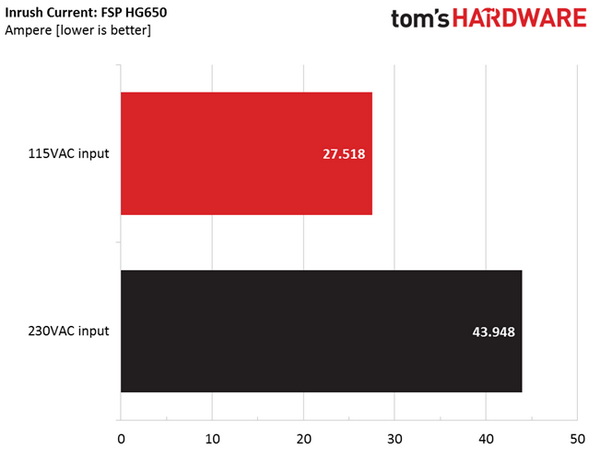
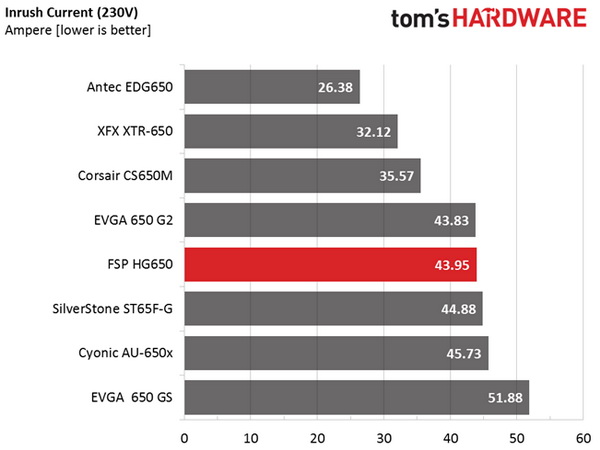
The inrush current is normal with both inputs (115V and 230VAC).
Load Regulation And Efficiency Measurements
The first set of tests explores voltage rail stability and efficiency. The applied load equals (approximately) 10 to 110 percent of the supply's maximum in increments of 10 percentage points.
Get Tom's Hardware's best news and in-depth reviews, straight to your inbox.
We conducted two additional tests. During the first, we stressed the two minor rails (5V and 3.3V) with a high load, while the load at +12V was only 0.10A. This test reveals whether a PSU is Haswell-ready or not. In the second test, we determined the maximum load the +12V rail could handle with minimal load on the minor rails.
| Test # | 12V | 5V | 3.3V | 5VSB | DC/AC (Watts) | Efficiency | Fan Speed (RPM) | Noise (dB[A]) | Temps (In/Out) | PF/AC Volts |
|---|---|---|---|---|---|---|---|---|---|---|
| 1 | 3.570A | 1.931A | 1.944A | 0.976A | 64.77 | 84.04% | 0 | 0 | 50.32 °C | 0.963 |
| 12.103V | 5.165V | 3.393V | 5.119V | 77.07 | 38.38 °C | 115.1V | ||||
| 2 | 8.174A | 2.906A | 2.926A | 1.175A | 129.76 | 88.63% | 0 | 0 | 51.52 °C | 0.984 |
| 12.098V | 5.158V | 3.380V | 5.102V | 146.40 | 39.22 °C | 115.1V | ||||
| 3 | 13.138A | 3.392A | 3.439A | 1.373A | 194.83 | 89.84% | 0 | 0 | 52.50 °C | 0.990 |
| 12.086V | 5.150V | 3.370V | 5.088V | 216.86 | 39.56 °C | 115.0V | ||||
| 4 | 18.107A | 3.888A | 3.928A | 1.575A | 259.74 | 89.93% | 1030 | 37.2 | 40.99 °C | 0.991 |
| 12.071V | 5.140V | 3.359V | 5.076V | 288.83 | 49.45 °C | 115.0V | ||||
| 5 | 22.748A | 4.873A | 4.930A | 1.776A | 324.71 | 89.89% | 1030 | 37.2 | 41.55 °C | 0.992 |
| 12.055V | 5.130V | 3.345V | 5.063V | 361.22 | 50.81 °C | 115.0V | ||||
| 6 | 27.396A | 5.849A | 5.938A | 1.979A | 389.64 | 89.55% | 1105 | 38.5 | 41.95 °C | 0.993 |
| 12.042V | 5.123V | 3.332V | 5.048V | 435.09 | 52.30 °C | 115.0V | ||||
| 7 | 32.048A | 6.839A | 6.963A | 2.185A | 454.57 | 89.06% | 1140 | 40.7 | 42.87 °C | 0.993 |
| 12.028V | 5.117V | 3.318V | 5.033V | 510.43 | 54.19 °C | 115.0V | ||||
| 8 | 36.723A | 7.834A | 7.992A | 2.390A | 519.58 | 88.31% | 1215 | 42.0 | 43.54 °C | 0.992 |
| 12.014V | 5.106V | 3.303V | 5.017V | 588.33 | 56.64 °C | 115.0V | ||||
| 9 | 41.832A | 8.336A | 8.538A | 2.394A | 584.61 | 87.57% | 1520 | 41.8 | 44.47 °C | 0.992 |
| 12.001V | 5.099V | 3.290V | 5.008V | 667.56 | 58.02 °C | 115.0V | ||||
| 10 | 46.492A | 8.839A | 9.056A | 3.529A | 649.48 | 86.56% | 1850 | 44.4 | 45.92 °C | 0.991 |
| 11.987V | 5.090V | 3.279V | 4.957V | 750.37 | 59.93 °C | 115.0V | ||||
| 11 | 51.961A | 8.853A | 9.078A | 3.535A | 714.37 | 85.64% | 2050 | 47.9 | 46.77 °C | 0.990 |
| 11.974V | 5.082V | 3.272V | 4.948V | 834.16 | 62.19 °C | 115.0V | ||||
| CL1 | 0.101A | 18.023A | 18.002A | 0.004A | 153.12 | 83.57% | 690 | 30.7 | 45.40 °C | 0.991 |
| 12.076V | 5.163V | 3.268V | 5.110V | 183.22 | 56.65 °C | 115.1V | ||||
| CL2 | 54.119A | 1.002A | 1.003A | 1.002A | 662.72 | 87.13% | 1950 | 46.8 | 47.02 °C | 0.991 |
| 11.996V | 5.093V | 3.328V | 5.061V | 760.63 | 61.00 °C | 115.1V |
Load regulation on the +12V and 5V rails is tight enough, while the 3.3V and 5VSB rails are looser. What matters most as far as load regulation is concerned, though, is the +12V rail's performance. In this case, it's kept within 1.2 percent, which is the second-best performance in this category, according to our charts.
Under 20 percent load, the unit easily clears the 80 Plus Gold requirement. It comes very close to the required 90 percent efficiency with a 50 percent load applied. In the full load test, efficiency is less than 0.5 percent away from the minimum allowed percentage. We're giving the Hydro G a pass since we conduct our tests at a much higher temperature than the 80 Plus organization.
The fan doesn't start spinning until we hit 40 percent load; its noise exceeds 40 dB(A) in the 70 percent load test. Even under a full load, the controller doesn't allow the fan to spin at full speed. That only happens during the overload test, at which point the fan exceeds 2000 RPM and gets really loud.
Current page: Load Regulation, Hold-Up Time And Inrush Current
Prev Page A Look Inside And Component Analysis Next Page Efficiency, Temperature And Noise
Aris Mpitziopoulos is a contributing editor at Tom's Hardware, covering PSUs.
-
Onus I see a Performance Per Dollar chart, but so far I've not been able to find the price of this unit. What is it?Reply
-
Aris_Mp ReplyI see a Performance Per Dollar chart, but so far I've not been able to find the price of this unit. What is it?
It is 90 bucks
http://www.newegg.com/Product/Product.aspx?Item=N82E16817104200&nm_mc=AFC-C8Junction&cm_mmc=AFC-C8Junction-VigLink2-_-na-_-na-_-na&cm_sp=&AID=10446076&PID=3821802&SID=il40akd6as0035wt00053 -
mrjhh I remember FSP being an OEM for older computer vendors like DEC, so they definitely aren't a newcomer to the field. I'm glad to see they know how to build a modern supply.Reply -
Onus IMHO FSP has always had a solid but "middle-of-the-pack" reputation; not anybody's first choice, but a lot better than a lot of the junk being sold. Even their Raider units that got very critical reviews were acceptable as budget units in light use. In big box PCs, I'd certainly rather see FSP than HEC or Bestec.Reply
-
jeffunit I see "op amp amplifier" mentioned several times in the review.Reply
What is an "op amp amplifier"
Doesn't amp stand for amplifier in this context, which expands to op amplifier amplifier?
-
Odd naming scheme for a power supply. Hope it doesn't confuse anyone into thinking water goes well with it. :PReply
Always good to see some of the larger if less well known manufacturers putting out quality units. -
jeffunit ReplyWhat is an "op amp amplifier"
short for operational amplifier
op amp is short for operational amplifier.
op amp amplifier is short for operational amplifier amplifier.
You need to pay more attention to what is written. -
turkey3_scratch Good performing power supply. In terms of voltages and ripple, beats the EVGA GS. I would never hesitate to recommend this unit, if it is priced well of course, which it already is not.Reply
